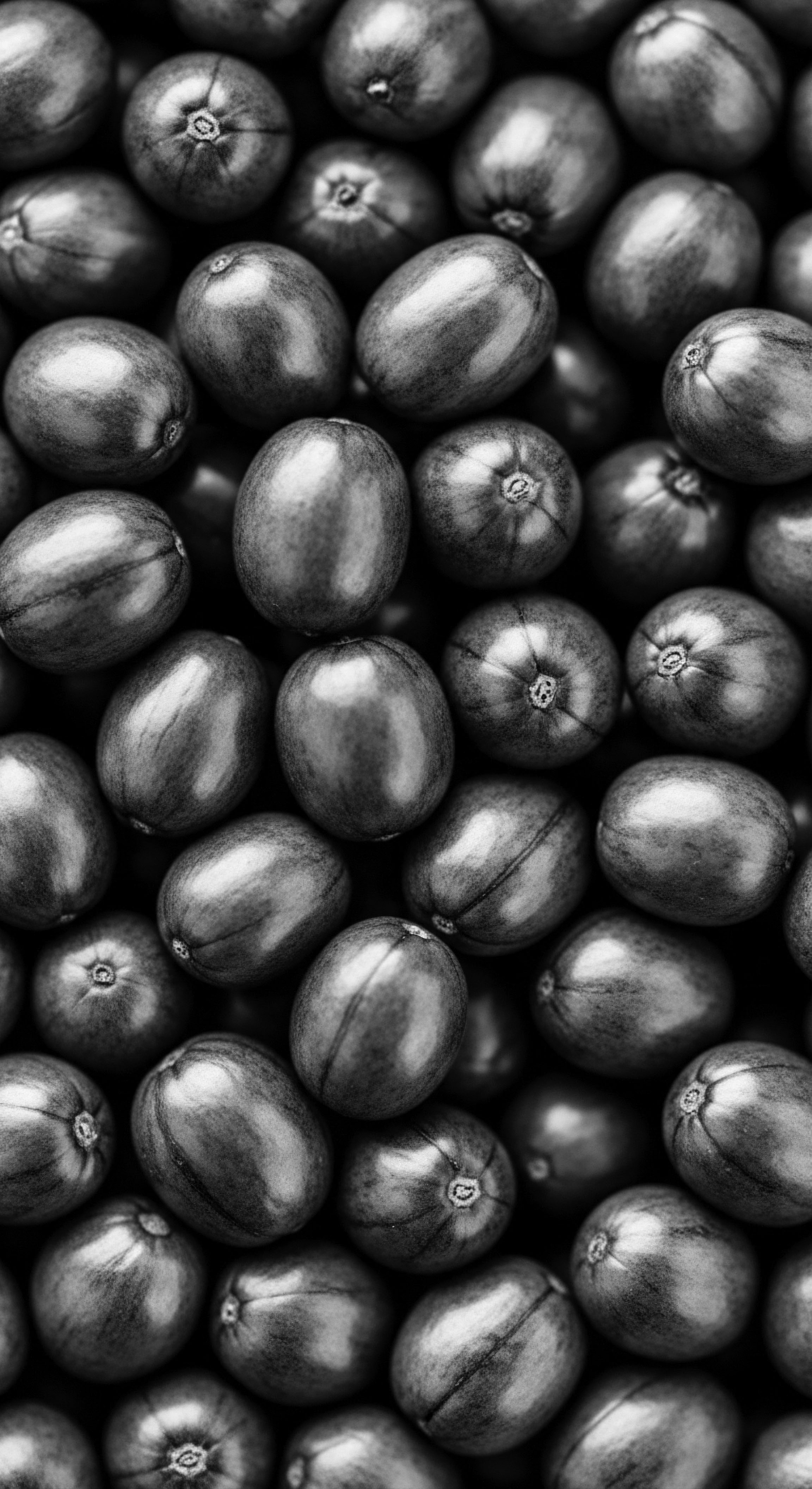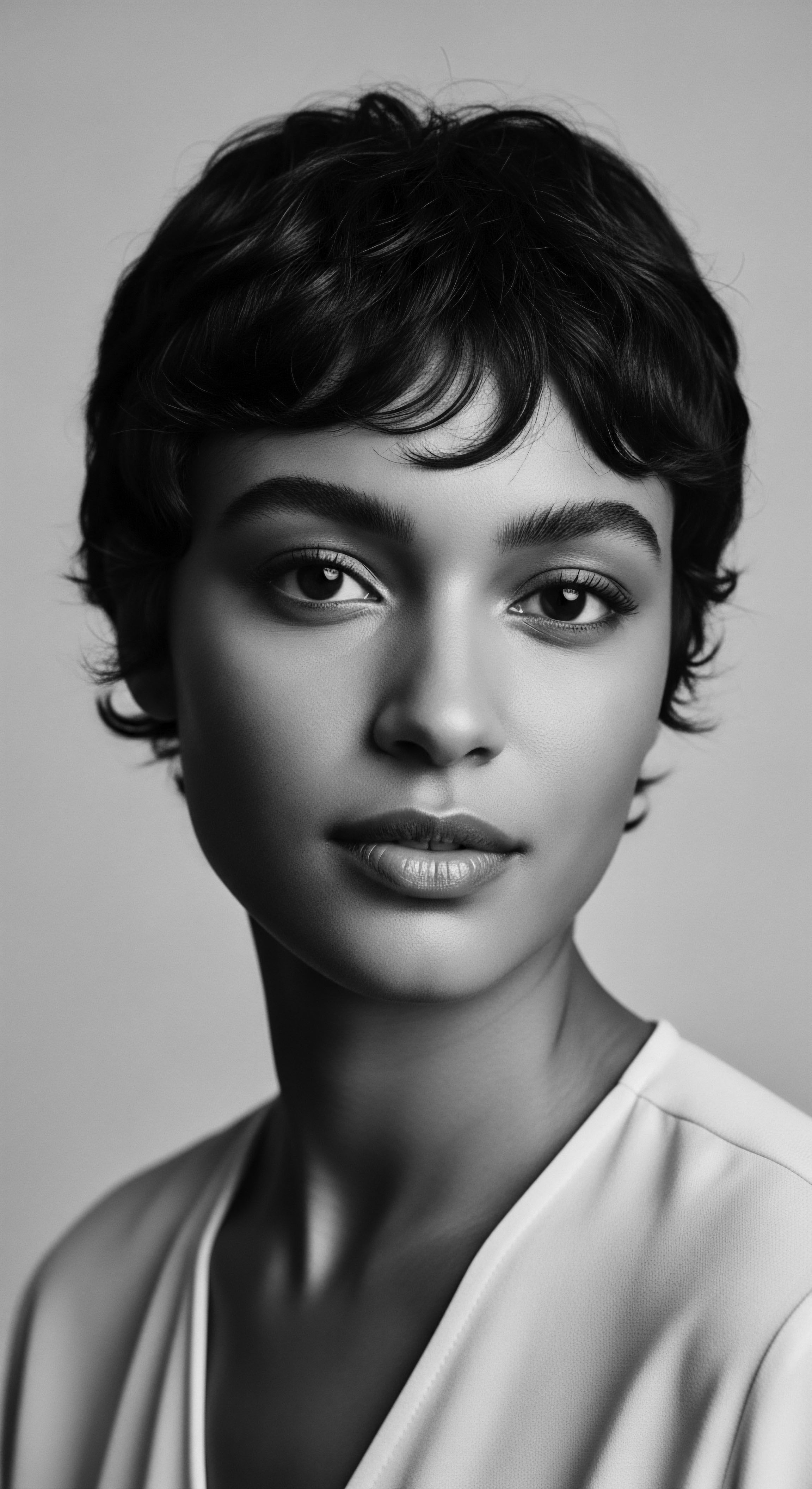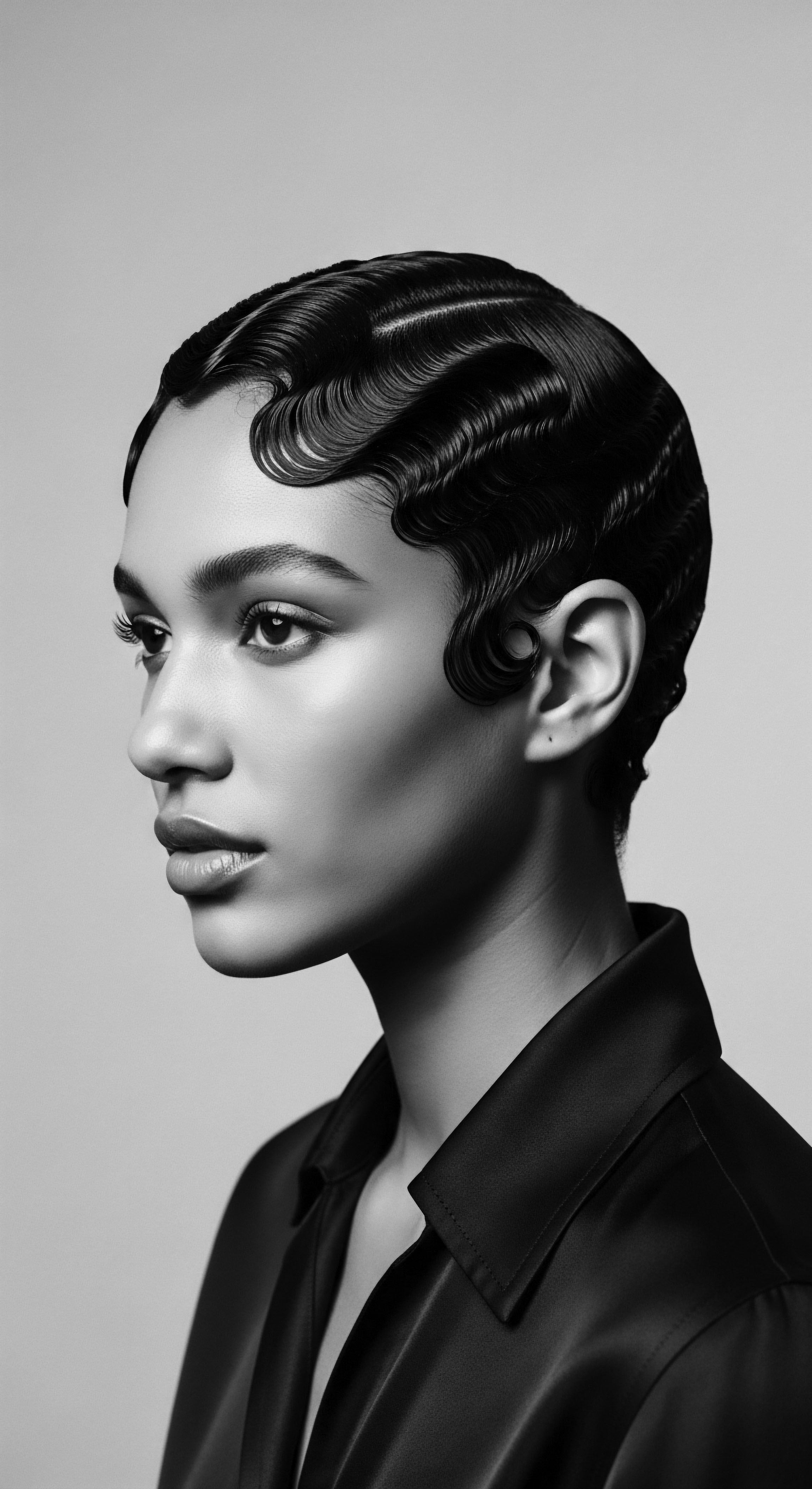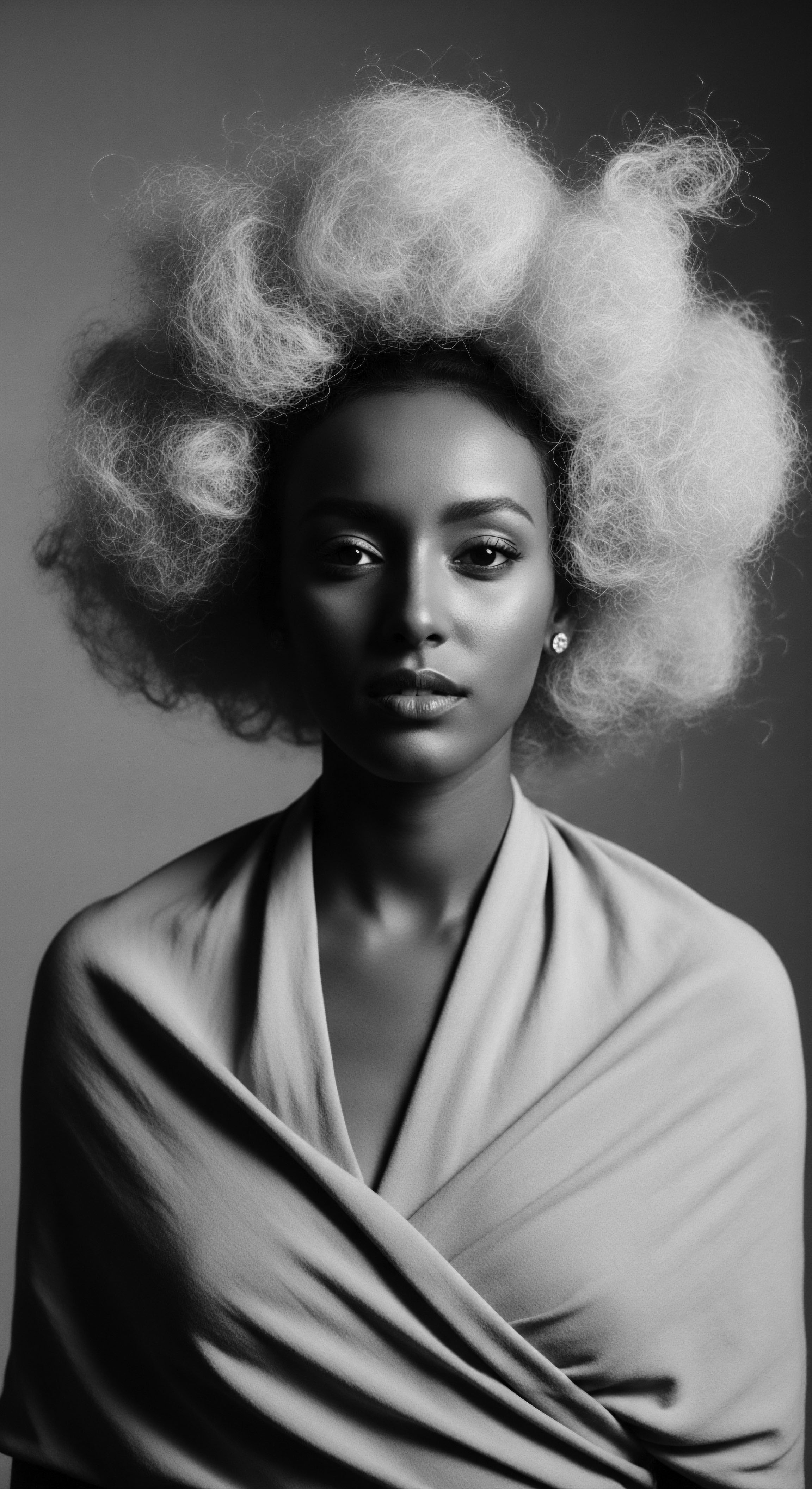
Roots
There is a whisper carried on the wind, a secret held within each curl and coil, that tells of ancestral journeys and inherent strength. Textured hair, in its myriad formations across Black and mixed-race peoples, often bears a reputation for fragility. This perception, while partly rooted in biological truth, frequently overshadows its deep resilience and the incredible heritage of care that has long attended it.
To truly understand why these strands often call for gentle handling, we must descend into the very architecture of the hair shaft, a realm where biology and generations of wisdom intersect. This biological design, passed down through the ages, is not a flaw, but rather a unique characteristic that has shaped practices and traditions for centuries.

Anatomy of a Strand ❉ Inherited Design
Each strand of hair, regardless of its outward appearance, begins its life in a follicle. For those with textured hair, this follicle is not a perfect circle, but rather an elongated, elliptical, or even S-shaped structure nestled within the scalp. This distinct form dictates the very shape of the hair as it emerges, causing it to coil and bend upon itself.
Consider the difference between a straight ribbon and a spiraled one; the spiral, though beautiful, holds inherent points of stress. This curvature is paramount to understanding its delicate nature.
The internal structure of a textured hair strand also presents a unique design. Hair primarily comprises proteins, primarily Keratin. In textured hair, this keratin distributes unevenly within the cortex, the central layer of the hair shaft. Imagine an ellipse; there can be a greater amount of keratin around the sides and less in the core.
This makes the strand almost hollow in its inner layer, contributing to its tendency to break more readily. This unique deposition of keratin, while providing the curl, also introduces areas where mechanical stress can lead to fracturing. The outermost protective layer, the Cuticle, composed of overlapping scales, also plays a role. In textured hair, these scales might not lie as flat as on straight strands, potentially lifting slightly at the bends and curves of the curl. This can expose the hair’s inner cortex, leaving it more susceptible to dehydration and damage.

How Does Curl Pattern Influence Hair’s Strength?
The greater the curl’s curvature, the more potential points of weakness arise along the hair shaft. Each twist and turn acts as a potential breaking point, especially when subjected to external forces such as combing, styling, or even the friction of daily life. This structural characteristic means that textured hair requires a different approach to care, one that minimizes mechanical stress and maximizes moisture retention.
Furthermore, African hair can have fewer Cuticular Cell Layers than Caucasian or Asian hair, amplifying its susceptibility to damage deep within the cortex. This anatomical reality shapes the historical and ongoing need for gentle handling and protective practices within Black and mixed-race hair heritage. The density of disulfide bonds in textured hair also contributes to its unique structure, further defining its shape and texture.
The distinctive curvature of textured hair, stemming from its elliptical follicle and uneven keratin distribution, shapes its inherent need for mindful care.

Echoes from the Source ❉ Ancestral Adaptations
Long before modern science unraveled the molecular intricacies of hair, ancestral communities understood its characteristics through lived experience. The very presence of tightly coiled hair is thought to be an ancient adaptation, with early humans in equatorial Africa developing such textures. This morphology likely aided in Water Retention and provided protection from intense ultraviolet radiation. The spiral structure and wider follicular patterns allowed more air circulation near the scalp, offering a form of thermoregulation in hot climates.
This deeply rooted biological heritage explains why practices prioritizing moisture, protection, and gentle interaction have been passed down through generations. These practices were not merely cosmetic; they were functional responses to the hair’s biological design within its environmental context.
The very concept of hair fragility, then, is not a modern discovery, but an ancient understanding woven into the fabric of daily life. Communities developed methods to work with, rather than against, the hair’s natural inclinations. This ancestral wisdom informs contemporary approaches to caring for textured hair, underscoring a continuum of knowledge that spans centuries.

Ritual
The wisdom of ancestors, honed over generations, speaks through the practices that attend textured hair. The perceived delicacy of textured strands did not lead to their abandonment, but rather to the creation of a rich tapestry of rituals and techniques designed to honor and preserve them. These are not merely styling choices; they are a living archive of resilience, community, and profound understanding, shaped by the biological realities of the hair itself.

Care from Antiquity ❉ What Traditional Methods Protected Hair?
Across various African societies, hair care rituals were deeply intertwined with identity, social status, and spirituality. Knowing that hair could be prone to dryness and breakage due to its structural design, communities developed meticulous routines and utilized ingredients readily available from their natural surroundings. These traditions predate synthetic conditioners and plastic combs, relying instead on observation, touch, and a profound respect for the living strand. The delicate nature of the hair meant that forceful manipulation was avoided; instead, care centered on minimal handling and strategies to shield the hair from environmental rigors.
Consider the ancient practices of hair oiling and conditioning, prevalent across many African cultures. While scientific understanding of porosity and protein balance arrived later, ancestral communities instinctively used substances like Shea Butter, Coconut Oil, and various plant extracts. These ingredients, often rich in fatty acids and emollients, served to lubricate the hair shaft, reduce friction between strands, and provide a protective coating. This barrier helped compensate for the challenges of natural sebum distribution in tightly coiled hair, which often struggles to travel effectively from the scalp down the length of the strand.
The goal was to seal in moisture and prevent the scales of the cuticle from lifting excessively, thereby guarding the hair’s inner core. Such practices, passed from elder to child, were not just about appearance; they were about maintaining the health and integrity of a biological feature central to identity.

Anointing the Crown ❉ Historical Ingredients and Their Purpose
- Shea Butter ❉ From the karité tree, used for its softening, emollient qualities to seal moisture.
- Baobab Oil ❉ Rich in omega fatty acids, traditionally employed for its nourishing and protective benefits.
- Coconut Oil ❉ Known for its ability to penetrate the hair shaft, preventing protein loss and providing deep hydration.
- Aloe Vera ❉ Valued for its soothing properties on the scalp and its capacity to condition hair.
- Rhassoul Clay ❉ A mineral-rich clay used for gentle cleansing and scalp purification, avoiding harsh stripping.

Protective Styling ❉ A Legacy of Preservation
The vulnerability of textured hair to mechanical stress, stemming from its coiling structure, led to the widespread adoption of protective styles throughout African history. Braiding, twisting, and coiling were not simply decorative; they were ingenious methods of safeguarding the hair. These styles minimized daily manipulation, reduced tangling, and protected the delicate ends of the hair from environmental exposure.
The longevity of these styles meant less frequent manipulation, directly addressing a key source of breakage in textured strands. This communal artistry created living sculptures, each plait and twist a testament to both creativity and pragmatic care.
For instance, the intricate braided patterns found in ancient Egyptian tomb paintings, or the elaborate coiffures of West African societies, served multiple purposes. They communicated marital status, tribal affiliation, age, and spiritual beliefs, while simultaneously acting as a shield for the hair’s inherent characteristics. This deep historical link between style and preservation highlights a profound, intuitive understanding of textured hair’s biological needs, long before electron microscopes revealed cuticular layers. The continued practice of protective styling in Black and mixed-race communities today represents a living connection to these ancestral strategies, demonstrating the timeless relevance of heritage in hair care.
| Ancestral Practice Oil Anointing |
| Biological Rationale Lubricates hair, reduces friction, seals moisture, mimics/supplements natural sebum distribution. |
| Ancestral Practice Protective Styling (Braids, Twists) |
| Biological Rationale Minimizes daily manipulation, reduces tangling, guards delicate ends from environmental elements. |
| Ancestral Practice Gentle Detangling |
| Biological Rationale Prevents mechanical stress at curl bends, where cuticles might be lifted or keratin uneven. |
| Ancestral Practice Herbal Rinses |
| Biological Rationale Balance scalp pH, cleanse gently without stripping, condition hair. |
| Ancestral Practice These historical practices directly addressed the biological traits that make textured hair delicate, a testament to inherited wisdom. |

A Question of Moisture ❉ Why Does Textured Hair Experience Dryness?
Textured hair often feels dry to the touch, a common complaint that transcends generations. The biological reason for this lies in the very structure that gives it its visual appeal. The coiling nature of the hair strand makes it difficult for the scalp’s natural oils, known as Sebum, to travel down the hair shaft effectively.
On a straight strand, sebum can slide down with ease; on a coiled strand, it meets numerous twists and turns, often failing to reach the ends. This leads to localized dryness, particularly at the mid-shaft and ends, areas most prone to breakage.
Furthermore, textured hair tends to have higher Porosity, especially if it has been exposed to environmental stressors, chemical treatments, or excessive manipulation. High porosity means the cuticle layers are more open, allowing moisture to enter and leave the hair shaft quickly. This rapid moisture loss necessitates constant replenishment, reinforcing the historical reliance on emollients and moisture-retaining ingredients. A study published in the Journal of Cosmetic Dermatology revealed that high porosity hair in African American women often results from a compromised cuticle layer, contributing to 30% more breakage and 40% less moisture retention.
The ancestral response was simple yet profound ❉ moisturize consistently and protect diligently. This formed the bedrock of care rituals, anticipating modern scientific understandings of lipid content, protein balance, and the physics of oil distribution on a curved surface. The tender thread of these practices connects us directly to the ingenuity of our forebears, who intuitively understood how to nurture these unique strands.

Relay
The enduring legacy of textured hair care, passed through generations, continues to inform our scientific inquiry and contemporary practices. We stand on the shoulders of those who came before, synthesizing ancient wisdom with modern understanding to decode the biological intricacies that contribute to the delicate nature of textured strands. This relay of knowledge bridges eras, ensuring that care is not merely reactive, but deeply informed by both heritage and discovery.

The Helix Unveiled ❉ Microscopic Realities of Fragility
At the micro-level, textured hair exhibits characteristics that distinguish it from straighter counterparts, influencing its perceived delicacy. The elliptical cross-sectional shape of the hair shaft is a key factor. This non-circular form, especially pronounced in tighter curl patterns, creates regions of varying thickness and inherent stress points along the fiber. When the hair is stretched or manipulated, these points experience disproportionate strain, making the strand more susceptible to failure.
Consider the phenomenon of Torsion, the twisting of the hair shaft upon its own axis. Tightly coiled hair can experience significant torsion at multiple points along its length due to its spiral growth. This internal stress, coupled with external forces such as combing, leads to microscopic cracks and damage.
The cumulative effect of these daily stressors can weaken the hair, causing it to break more easily than hair with a uniform, circular cross-section and fewer natural bends. Studies have indicated that curly hair can require 5 to 50 times the combing force of straight hair, directly contributing to mechanical stress and potential breakage.
Furthermore, the outermost layer, the Cuticle, composed of dead, overlapping cells, is the hair’s primary defense. While the cuticle is robust, its integrity can be compromised in textured hair. The sharp angles and frequent twists in highly coiled hair mean that cuticular scales, which should ideally lie flat, can be more prone to lifting, especially at the curves. This lifting exposes the inner cortex, allowing vital moisture to escape and rendering the hair more vulnerable to environmental damage and chemical penetration.

Protein and Porosity ❉ A Delicate Balance?
The protein composition of textured hair is a topic of ongoing scientific discussion. Hair is primarily keratin, a structural protein. While some research has explored whether differences in specific protein types or lipid content contribute to fragility, evidence remains inconclusive regarding intrinsic protein deficiencies. However, external factors and processing undoubtedly impact protein bonds.
Chemical treatments, such as relaxers, drastically alter the hair’s protein structure by breaking and reforming disulfide bonds, leading to significant weakening and increased porosity. When the hair’s protein structure is compromised, its elasticity diminishes, making it brittle and prone to snapping rather than stretching.
Porosity, the hair’s ability to absorb and retain moisture, is intimately tied to the condition of the cuticle. Textured hair, particularly Afro-textured hair, is often categorized as high porosity. This means the cuticle is frequently more open, allowing water to enter quickly but also to escape with equal speed. This predisposition to moisture loss necessitates consistent and deep conditioning.
The protein-moisture balance within the hair shaft is critical. A study from the International Journal of Trichology indicated that a significant percentage of African American women with high porosity hair showed either an excess of moisture without adequate protein support or protein overload from improper treatment. This highlights a nuanced challenge in care, requiring an informed approach to products and regimens.
- Low Porosity ❉ Cuticle scales lie flat, making it difficult for moisture to enter, but once inside, it is retained well.
- Normal Porosity ❉ Cuticle is slightly raised, allowing for balanced moisture absorption and retention.
- High Porosity ❉ Cuticle is raised or damaged, leading to rapid moisture absorption and equally rapid loss.

The Living Archive ❉ Preserving and Advancing Care
The historical reverence for hair in African and diasporic communities provides a foundational framework for contemporary scientific exploration. Ancestral methods of oiling, protective styling, and gentle handling align remarkably with modern understanding of cuticle health, moisture retention, and minimizing mechanical stress. For instance, the traditional use of fatty acid-rich oils by West African women mirrors current scientific recommendations for addressing dryness and improving hair lubricity.
This deep connection to heritage means that understanding textured hair’s delicate biological traits is not an academic exercise alone; it is a means of honoring a profound cultural legacy. Research into hair fiber characteristics, genetic predispositions for curl pattern, and the biomechanics of coily strands (as seen in studies by specialists like Dr. Nina Jablonski, who researched UV ray protection by tightly curled hair) enriches our appreciation for how heritage care practices emerged as ingenious solutions to inherent biological realities. The continuity between ancient practice and modern science forms a powerful testament to the wisdom embedded within textured hair traditions.
One compelling historical example that powerfully speaks to the connection between biological traits and heritage practices is the development of traditional hair grooming tools. Across various African civilizations, combs carved from wood or bone, often with wide, sturdy teeth, were ubiquitous. These implements, like those used by ancient Egyptians or the Dogon people of Mali, were designed to navigate coils and tangles with minimal snagging and breakage. They were a direct response to the hair’s tendency to tangle and its vulnerability to harsh manipulation, a biological trait stemming from its curved structure and raised cuticle.
The meticulous artistry of these combs, often adorned with symbolic carvings, speaks to the high value placed on hair care as both a practical necessity and a cultural expression. These tools, therefore, embody the ancestral knowledge that understood the hair’s delicate nature and sought to preserve its integrity through thoughtful design and slow, deliberate action. This centuries-old tradition of creating and using specialized tools for gentle detangling directly corresponds with modern trichological advice to use wide-tooth combs on wet, conditioned textured hair to minimize mechanical damage. This is a clear demonstration of how ancestral practices were, in effect, a pragmatic response to hair’s biological realities, passed down as practical wisdom. (Mercer, 1987)
Modern scientific inquiry often validates the profound, intuitive understanding of hair’s biological truths held within ancestral hair care traditions.

Reflection
The journey through the intricate biological architecture of textured hair, from its unique follicular origins to the complex interplay of proteins and porosity, reveals a profound story. It is a story not of inherent weakness, but of specific design that necessitates a particular, often tender, approach to care. This understanding, rooted in scientific observation, finds its deepest resonance in the living heritage of Black and mixed-race communities.
For generations, wisdom was gathered, practices refined, and rituals established, all to honor and protect these strands. The delicate nature of textured hair, then, is not a burden, but a call to connection—a connection to our own bodies, to ancestral knowledge, and to the continuous evolution of self-care.
Roothea, at its core, seeks to be a living archive of this heritage, a space where the whispers of the past meet the clarity of the present. Our exploration of textured hair’s biological traits serves to illuminate why certain care practices have endured, why a bonnet at night is more than a mere accessory, and why the selection of a specific oil carries generations of intention. Every coil, every curl, holds within it the memory of adaptation, resilience, and beauty.
To understand its delicate biology is to deepen our respect for the ancestral hands that nurtured it, for the communities that celebrated it, and for the inherent strength that lies within its very structure. This journey into the Soul of a Strand truly reveals that what might seem like fragility is, in fact, an invitation to a more profound and mindful relationship with our crowning glory—a timeless relationship woven through heritage.

References
- Bryson, W. G. Harland, D. P. Caldwell, J. P. Vernon, J. A. Walls, R. J. & Woods, J. L. (2009). Cortical cell types and intermediate filament arrangements correlate with fiber curvature in Japanese human hair. Journal of Structural Biology, 166(1), 46-58.
- Caffrey, C. (2023). Afro-textured hair. EBSCO Research Starters .
- Cornwell, P. A. (2020). Defying Damage ❉ Understanding Breakage in Afro-textured Hair. Cosmetics & Toiletries .
- Davis, A. Y. (1987). Women, Race & Class. Vintage Books.
- Gan, D. (2022). Is your natural texture experiencing protein overload? Pattern Beauty .
- Gopinath, S. (2023). How To Repair Damaged Kinky, Coily Hair. OurX .
- Heard, R. (2021). Damaged Hair Cuticles and Porosity Explained. Absolutely Everything Curly .
- Jablonski, N. G. (2014). Living Color ❉ The Biological and Cultural Battles That Determine Skin Color. University of California Press.
- Lasisi, K. A. (2019). African hair diversity and its implications for forensic analysis. American Journal of Biological Anthropology, 169(3), 405-415.
- Mercer, K. (1987). Black hair/style politics. New Formations, 3, 33-52.
- Moussa, H. et al. (2024). The Genomic Variation in Textured Hair ❉ Implications in Developing a Holistic Hair Care Routine. MDPI .
- Ogario, N. (2021). Hair Elasticity ❉ Get Bouncy, Shiny Locks With These Expert Tips. Healthline .
- Patel, M. et al. (2017). Understanding the structure and fragility of curly hairs. Fit Cosmeticos .
- Randall, V. A. & Birch, M. P. (2009). Hair biology. In Textbook of Dermatology (8th ed.). Blackwell Publishing.
- Robbins, C. R. (2012). Chemical and Physical Behavior of Human Hair. Springer.
- Tolliver, S. et al. (2025). Historical Perspectives on Hair Care and Common Styling Practices in Black Women. Cutis, 115(3), 95-99.
- Wang, S. et al. (2019). High porosity hair in African American women ❉ A 2019 study. Journal of Cosmetic Dermatology, 18(6), 1845-1850.
- Wong, E. et al. (2020). The Protein-Moisture Balance ❉ A groundbreaking 2020 study by the International Journal of Trichology. International Journal of Trichology, 12(3), 98-105.
